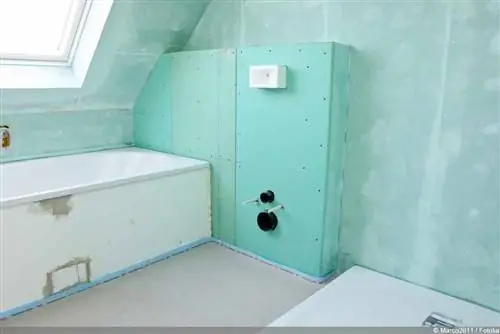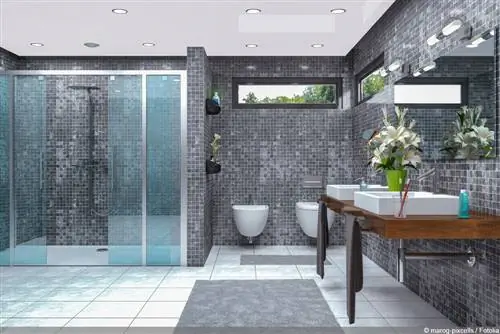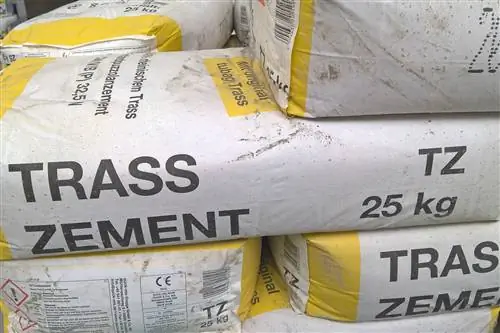- Author admin [email protected].
- Public 2023-12-17 03:39.
- Last modified 2025-06-01 06:48.
Damp or wet room - are there any differences between them or do the terms perhaps even describe the same thing? Everyone probably asks themselves this question at some point when they come across products with names like “suitable for wet rooms” in the hardware store or when they are renovating bathrooms etc. In fact, there are crucial differences between wet and damp rooms. They are explained here.
Wet room: definition and properties
Definition:
Wet rooms are rooms in which there is often high humidity.
The term is best explained using the example of the bathroom:
Showering and bathing releases a larger amount of water vapor into the air and increases the humidity. The warm, moist air settles on the cooler walls and condenses here. This can lead to moisture damage and mold formation on the floor, walls and ceiling - if no suitable means and materials are used.
Tip:
Therefore, bathrooms are usually tiled.
You also have to pay attention to the suitability of sockets and electronic devices. On the one hand, they must be designed for use in damp rooms and protected from water. On the other hand, they must have aFI switch (residual current circuit breaker).
Wet room: definition and properties
A good example of wet rooms in private areas are walk-in or ground-level showers. In them, not only is the air humidity increased by water vapor, but at least the soil also regularly comes into direct contact with running water. Another common term for wet rooms is “wet cells”.
Because water in liquid form comes into contact with walls and floors, according toDIN 18195 Part 1 Point 3.33 there must be a drain. The following factors are also crucial:
- Floor slope: In order for the water to drain away quickly, the floor must slope towards the drain.
- Sockets, switches and electronic devices: These must be avoided in the wet room.
- Lamps: Lamps require 100 percent splash protection. The switches for the lamps must also be located outside the wet room.
- Doors: Even wet room doors are not enough, special doors for wet rooms must be used instead.
Which electronic installations are permitted and where they may be installed is prescribed inDIN VDE 0100-701.
Difference at a glance

The most significant difference between damp rooms and wet rooms is that wet rooms only need to be protected against increased humidity - wet rooms, on the other hand, also have to be protected against splashes and running water.
This makes it important not only to protect everything so that it cannot be damaged by moisture and humidity. But also that it cannot cause any damage - such as an unsuitable electrical device that comes into contact with water.
In order to create this safe condition, the applicable regulations for damp and wet rooms should be taken into account during construction, equipment and renovation. For electrical installations, these can be found inDIN-VDE standard 0100-701:2008-10For building materials and necessary seals inDIN 18151-5






